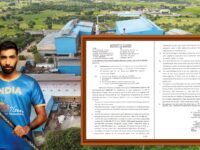At Wimbledon, the Grass Isn’t Quite the Grass Anymore

Djokovic’s answer: none of them. His next competitive match would be the first round at the All England Club, this week—and it would feel just fine. As far as Djokovic is concerned, playing tennis on grass no longer constitutes the kind of esoteric pursuit that requires weeks of specialized preparation. And he’s not alone. Players and coaches are realizing that the lawns of Wimbledon barely feel like grass at all anymore.
“Grass courts have changed a lot—they play more like a hard court,” said Chris Evert, who won Wimbledon three times between 1974 and 1981 and works as an analyst for ESPN. “They’re harder. There’s a lot more groundstrokes being played.”
The relative hardness of a grass court might seem like a small detail in a sport as complex as tennis. But it changes everything about how the game is played, from how high the ball bounces to how players move. It used to be so awkward to get used to that Wimbledon championships spent decades as the preserve of grass-court experts, who mastered serve-and-volley tennis and short rallies.
Now, a player as gifted as Djokovic can go seamlessly from cleaning up at Roland-Garros to cleaning up at the All England Club, where the 36-year-old hopes to become the oldest men’s singles champion in the Open Era.
“You still have to adjust some, but it’s microscopic in comparison to what it used to be,” says Paul Annacone, a former coach to Pete Sampras and Roger Federer who now consults for the Tennis Channel. “That’s a reason why I think we’ve seen the great players dominate even more, because they haven’t had to change as much.”
The trend is part of a larger homogenizing of surfaces across the sport, and in particular at the four Grand Slam events. Quantifying the phenomenon is tricky, and plenty have tried by using ace percentages. But the statistics website Tennis Abstract developed a model around the expected length of rallies with data pulled from shot-by-shot logs of over 12,000 matches.
For the period between 1959 and 1995, a spell dominated in the men’s game by serve-and-volleyers, the analysis found that rallies on grass tended to be 0.75 shots shorter than they were on hard courts and a full 1.75 shots shorter than those on clay. But since 2016, the grass and clay appear to have converged. Grass rallies now last just 0.45 shots less than hard court rallies and 0.61 shots less than on clay.
“The grass definitely seems thicker, which is terrific, because it stays lush a lot longer,” Annacone says. “And the balls feel either a little bit heavier or a little less compressed, so it’s more difficult to hit winners.”
Slazenger, which manufactures the Wimbledon ball, said that it hasn’t changed the specifications since 1995. The last major change to the grass recipe, meanwhile, dates back to 2001, when the All England Club switched to more durable 100% perennial ryegrass . (It was previously 70% rye and 30% creeping red fescue, in case you’re keeping score at home.) The club doesn’t believe that the alteration to the mix contributed to any significant change in the perceived speed of the grass plays.
But one thing that has evolved dramatically is the condition of the soil. As British summers grew warmer over the past two decades, the courts have become harder during the two weeks of Wimbledon, allowing the ball to bounce higher and minimizing some of the surface’s more baffling effects.
The other factor, former players and coaches said, is the radical progress in racket technology. Newer equipment, which generates more spin with the flick of a wrist, helps players hit better shots from tougher positions to stay in points longer. Fewer men can simply serve the ball straight through their opponents anymore—which happens to make for better television viewing too.
For a former champion such as Djokovic’s current coach, the big-serving Goran Ivanisevic who won in 2001, current conditions would have been a nightmare. But over the years that followed, Annacone believes that slightly slower grass courts played a role in making the era of the Big Three. Neither Djokovic, nor Federer or Rafael Nadal ever had a lights-out power serve in their arsenals. So a surface that evolved toward starting more points from scratch only magnified the gifts of all-rounders.
“In years past, you had ‘court-surface specialists.’ But I’m not really sure that that phrase really makes much sense anymore,” Annacone says. “It’s mostly lateral tennis at the back of the court with finishing at the net on occasion.”
That doesn’t mean that the grass—with its mystique, its nuance, and its imperfections—isn’t intimidating to some. The surface might be slower than it’s ever been, but to world No. 4 Casper Ruud, it remains too dizzying to play his best tennis on. Turning it into a running joke, he’s all but given up on ever winning a grass-court tournament.
“I think grass,” Ruud said, “is for golf players.”

Atul Tiwari is a seasoned journalist at Mumbai Times, specializing in city news, culture, and human-interest stories. With a knack for uncovering compelling narratives, Atul brings Mumbai’s vibrant spirit to life through his writing.





